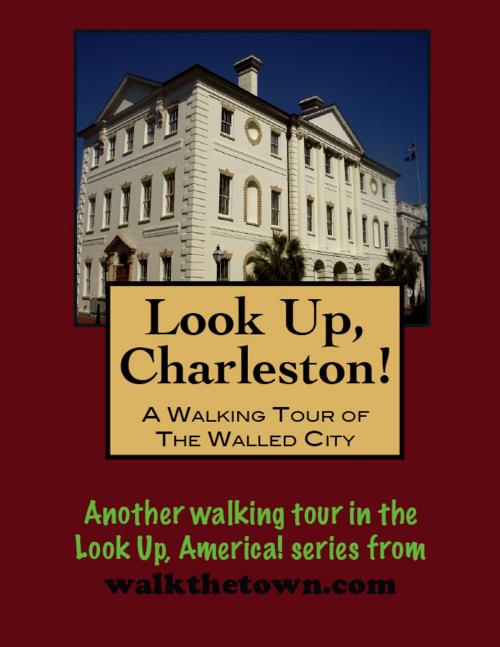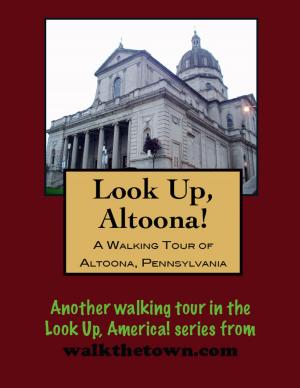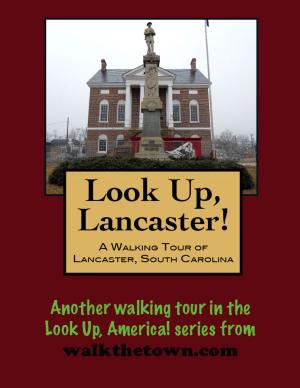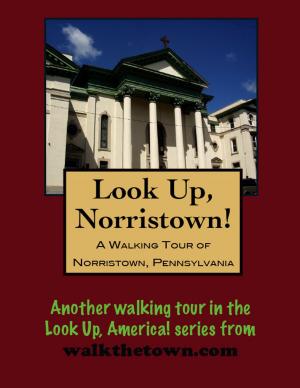Look Up, Charleston! A Walking Tour of Charleston, South Carolina: Walled City
Nonfiction, Travel, United States, South, History, Americas| Author: | Doug Gelbert | ISBN: | 9781452320083 |
| Publisher: | Doug Gelbert | Publication: | November 11, 2010 |
| Imprint: | Smashwords Edition | Language: | English |
| Author: | Doug Gelbert |
| ISBN: | 9781452320083 |
| Publisher: | Doug Gelbert |
| Publication: | November 11, 2010 |
| Imprint: | Smashwords Edition |
| Language: | English |
There is no better way to see America than on foot. And there is no better way to appreciate what you are looking at than with a walking tour. Whether you are preparing for a road trip or just out to look at your own town in a new way, a downloadable walking tour from walkthetown.com is ready to explore when you are.
Each walking tour describes historical and architectural landmarks and provides pictures to help out when those pesky street addresses are missing. Every tour also includes a quick primer on identifying architectural styles seen on American streets.
Charleston was a walled fortress city between the years of 1690 and 1720, a period of constant danger from hostile French and Spanish invaders, Native American tribes, and pirates. In all drawings from that time, the walls are depicted as straight and sharply angular, with no evidence of haphazard construction. While the bastions may have begun as crude earthworks, it seems clear that by the early 18th century they had been engineered and refined to a fairly high degree of sophistication.
The outer wall was in a shape of a trapezoid anchored at the corners by four bastions: Granville Bastion and Craven Bastion on the wide side of the trapezoid along the waterfront, and Carteret Bastion and Colleton Bastion anchoring the narrow inland side. Midway between Granville and Craven bastions was a semicircular waterfront projection called the Half-Moon Battery, above which stood the original Court of Guard. The Old Exchange building was constructed upon this spot in the mid-18th century.
The waterfront wall was a single structure, but the inland walls consisted of double barriers seperated by a moat. Little is known about the nature of the moat. It may have simply been an open space between the inner and outer walls, or it may have been a trench. There is no indication whether water from the Cooper River was channeled into this moat, but given Charleston's water table and climate, it seems likely that it collected standing water for at least portions of the year.
This walking tour will begin at the intersection of present-day Broad and Meeting streets, known today as the Four Corners of the Law. In the days of the Walled City this is where entrance to the fortress was gained by two drawbridges...
There is no better way to see America than on foot. And there is no better way to appreciate what you are looking at than with a walking tour. Whether you are preparing for a road trip or just out to look at your own town in a new way, a downloadable walking tour from walkthetown.com is ready to explore when you are.
Each walking tour describes historical and architectural landmarks and provides pictures to help out when those pesky street addresses are missing. Every tour also includes a quick primer on identifying architectural styles seen on American streets.
Charleston was a walled fortress city between the years of 1690 and 1720, a period of constant danger from hostile French and Spanish invaders, Native American tribes, and pirates. In all drawings from that time, the walls are depicted as straight and sharply angular, with no evidence of haphazard construction. While the bastions may have begun as crude earthworks, it seems clear that by the early 18th century they had been engineered and refined to a fairly high degree of sophistication.
The outer wall was in a shape of a trapezoid anchored at the corners by four bastions: Granville Bastion and Craven Bastion on the wide side of the trapezoid along the waterfront, and Carteret Bastion and Colleton Bastion anchoring the narrow inland side. Midway between Granville and Craven bastions was a semicircular waterfront projection called the Half-Moon Battery, above which stood the original Court of Guard. The Old Exchange building was constructed upon this spot in the mid-18th century.
The waterfront wall was a single structure, but the inland walls consisted of double barriers seperated by a moat. Little is known about the nature of the moat. It may have simply been an open space between the inner and outer walls, or it may have been a trench. There is no indication whether water from the Cooper River was channeled into this moat, but given Charleston's water table and climate, it seems likely that it collected standing water for at least portions of the year.
This walking tour will begin at the intersection of present-day Broad and Meeting streets, known today as the Four Corners of the Law. In the days of the Walled City this is where entrance to the fortress was gained by two drawbridges...















